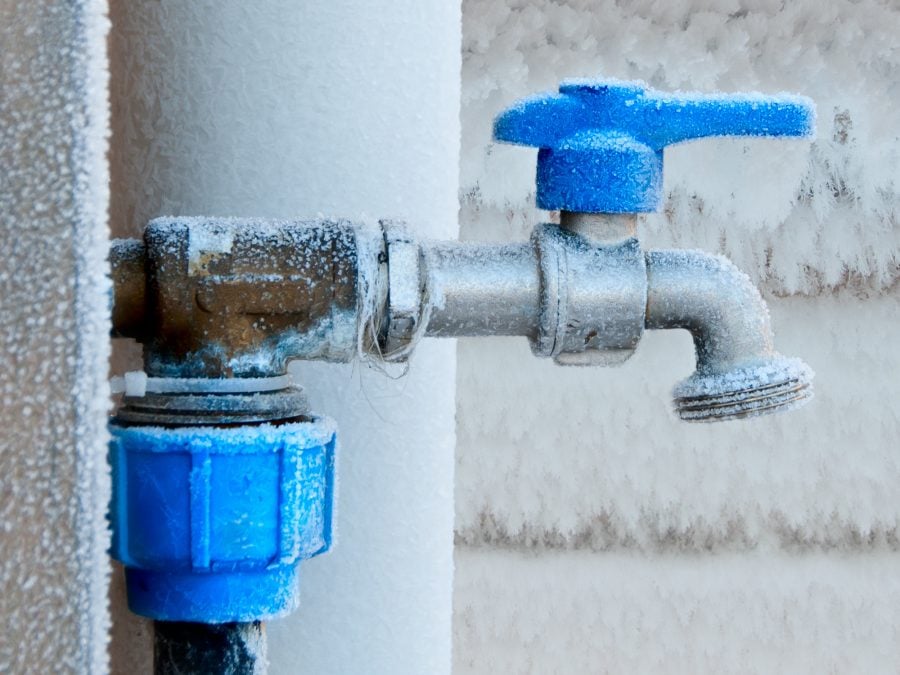Avoiding Pipes from Cold Weather: Effective Strategies
Avoiding Pipes from Cold Weather: Effective Strategies
Blog Article
The article author is making a number of great annotation related to How to Prevent Your Pipes From Freezing as a whole in this article below.

Cold weather can wreak havoc on your pipes, specifically by freezing pipes. Below's how to stop it from occurring and what to do if it does.
Intro
As temperatures drop, the danger of frozen pipes rises, potentially bring about costly repairs and water damages. Understanding exactly how to stop frozen pipes is critical for house owners in cool climates.
Comprehending Frozen Pipelines
What creates pipes to freeze?
Pipes freeze when subjected to temperature levels below 32 ° F (0 ° C) for extended periods. As water inside the pipes freezes, it increases, putting pressure on the pipe walls and potentially causing them to burst.
Risks and damages
Icy pipelines can lead to supply of water interruptions, property damage, and expensive repairs. Burst pipelines can flooding homes and trigger substantial structural damages.
Indicators of Frozen Water Lines
Determining frozen pipelines early can avoid them from bursting.
How to recognize frozen pipelines
Try to find decreased water flow from taps, uncommon odors or sounds from pipes, and visible frost on subjected pipelines.
Prevention Tips
Shielding vulnerable pipelines
Wrap pipelines in insulation sleeves or make use of heat tape to secure them from freezing temperature levels. Focus on pipes in unheated or external areas of the home.
Heating techniques
Maintain indoor rooms adequately warmed, specifically locations with plumbing. Open cabinet doors to allow cozy air to flow around pipes under sinks.
Protecting Outdoor Pipes
Yard hose pipes and outdoor taps
Separate and drain pipes garden pipes prior to winter. Install frost-proof spigots or cover exterior faucets with insulated caps.
What to Do If Your Pipes Freeze
Immediate actions to take
If you think frozen pipelines, keep taps available to relieve pressure as the ice thaws. Make use of a hairdryer or towels soaked in hot water to thaw pipelines gradually.
Long-Term Solutions
Architectural adjustments
Think about rerouting pipelines away from exterior wall surfaces or unheated areas. Add extra insulation to attic rooms, cellars, and crawl spaces.
Updating insulation
Invest in premium insulation for pipes, attics, and walls. Correct insulation aids preserve consistent temperature levels and decreases the threat of frozen pipes.
Final thought
Protecting against frozen pipelines requires proactive procedures and quick reactions. By comprehending the reasons, indications, and preventive measures, house owners can shield their pipes during cold weather.
6 Proven Ways to Prevent Frozen Pipes and Protect Your Home
Disconnect and Drain Garden Hoses
Before winter arrives, start by disconnecting your garden hoses and draining any remaining water. Close the shut-off valves that supply outdoor hose bibs and leave the outdoor faucet open to allow any residual water to drain. For extra protection, consider using faucet covers throughout the colder months. It’s also important to drain water from any sprinkler supply lines following the manufacturer’s directions.
Insulate Exposed Pipes
Insulating your pipes is an effective way to prevent freezing. Pipe insulation is readily available at home improvement stores and is relatively inexpensive. Pay close attention to pipes in unheated areas such as the attic, basement, crawl spaces, or garage. Apply foam insulation generously to create a buffer against the cold. You can also wrap your pipes in heat tape or thermostat-controlled heat cables for added warmth.
Seal Air Leaks
Inspect your home for any cracks or openings that could let in cold air. Seal any holes around the piping in interior or exterior walls, as well as the sill plates where your home rests on its foundation. Additionally, make sure to keep your garage door closed unless you’re entering or exiting. Leaving it open creates a significant air leak that can lead to frozen pipes.
Allow Warm Air Circulation
During cold snaps, it’s essential to allow warm air to circulate evenly throughout your home. Leave interior doors ajar to promote better airflow. Open kitchen and bathroom cabinets to help distribute heat consistently around the rooms. If you have small children or pets, be sure to remove any household chemicals or potentially harmful cleaners from open cabinets for safety.
Let Faucets Drip
A small trickle of water can make a big difference in preventing ice formation inside your pipes. When temperatures drop significantly, start a drip of water from all faucets served by exposed pipes. This continuous flow helps prevent the water from freezing. Additionally, running a few faucets slightly can relieve pressure inside the pipes, reducing the chances of a rupture if the water inside does freeze.
https://choateshvac.com/6-proven-ways-to-prevent-frozen-pipes-and-protect-your-home/

I'm certainly very drawn to Prevent Frozen Pipes and I really hope you enjoyed reading the entry. In case you enjoyed reading our blog entry please do not forget to pass it around. I am grateful for being here. Kindly pay a visit to our site back soon.
Call Today Report this page